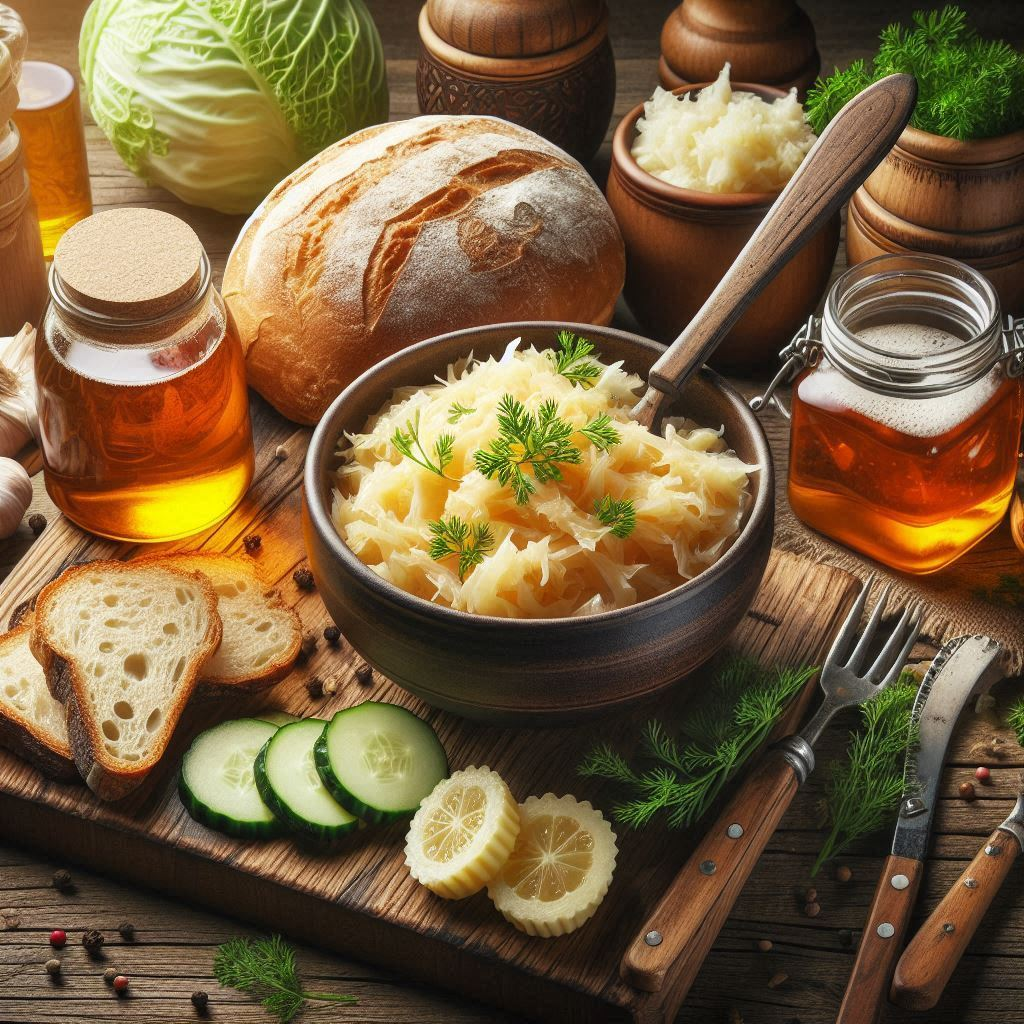
Sauerkraut: A Culinary Journey Through History and Preparation
Sauerkraut, a fermented cabbage dish, has a rich history dating back centuries. Its origins can be traced to ancient China, where cabbage was preserved in a similar manner. However, it was the Germans who popularized sauerkraut, making it an integral part of their cuisine.
Historical Evolution:
- Ancient China: Around 600 BC, Chinese farmers preserved cabbage by salting and fermenting it in earthenware jars. This technique extended the shelf life of cabbage during winter months.
- Europe: Sauerkraut likely arrived in Europe with migrating Germanic tribes around the 1st century AD. Over time, it became a staple food in Germany, Austria, and other Central European countries.
- Middle Ages: During the Middle Ages, sauerkraut was a valuable source of vitamin C for sailors and explorers, preventing scurvy on long voyages.
- 18th Century: German immigrants brought sauerkraut to the United States, where it gained popularity as a traditional dish.
Preparation:
Making sauerkraut is a simple yet time-consuming process:
- Selecting Cabbage: Choose firm, fresh heads of green cabbage. Remove the outer leaves and core.
- Shredding: Finely shred the cabbage using a sharp knife or a food processor fitted with a shredding blade.
- Salting: Generously salt the shredded cabbage, using approximately 1 tablespoon of salt per 5 pounds of cabbage. The salt draws out moisture and initiates the fermentation process.
- Fermentation: Pack the salted cabbage into a clean glass or ceramic container. Cover with a lid or plate that fits inside the container, allowing some space for expansion. Weight the cabbage down with a heavy object, such as a stone or a filled jar.
- Temperature Control: Keep the sauerkraut at a temperature between 60-70°F (16-21°C) for the first 2-3 weeks. This is the optimal temperature for fermentation.
- Monitoring: Check the sauerkraut regularly for any signs of spoilage, such as mold or discoloration. If any issues arise, discard the batch.
- Aging: After 2-3 weeks, the sauerkraut is ready to eat. However, for a more developed flavor, allow it to age for an additional 4-6 weeks.
- Storage: Store sauerkraut in a cool, dark place, such as a refrigerator or cellar. It can be kept for several months.
Variations:
There are numerous variations of sauerkraut, including:
- Bavarian Sauerkraut: Made with white cabbage and flavored with juniper berries and caraway seeds.
- Alsatian Sauerkraut: Finely shredded and flavored with Riesling wine.
- American Sauerkraut: Typically made with red cabbage and vinegar.
Culinary Uses:
Sauerkraut is a versatile dish that can be enjoyed in various ways:
- As a Side Dish: Serve sauerkraut alongside roasted meats, sausages, or dumplings.
- In Salads: Add sauerkraut to salads for a tangy and crunchy element.
- In Soups and Stews: Use sauerkraut as an ingredient in hearty soups and stews.
- As a Topping: Top hot dogs, sandwiches, or burgers with sauerkraut for an extra layer of flavor.
Sauerkraut is not only a delicious and flavorful dish but also a rich source of probiotics, which are beneficial bacteria that support gut health. So, next time you’re looking for a tangy and nutritious addition to your meals, consider giving sauerkraut a try.



